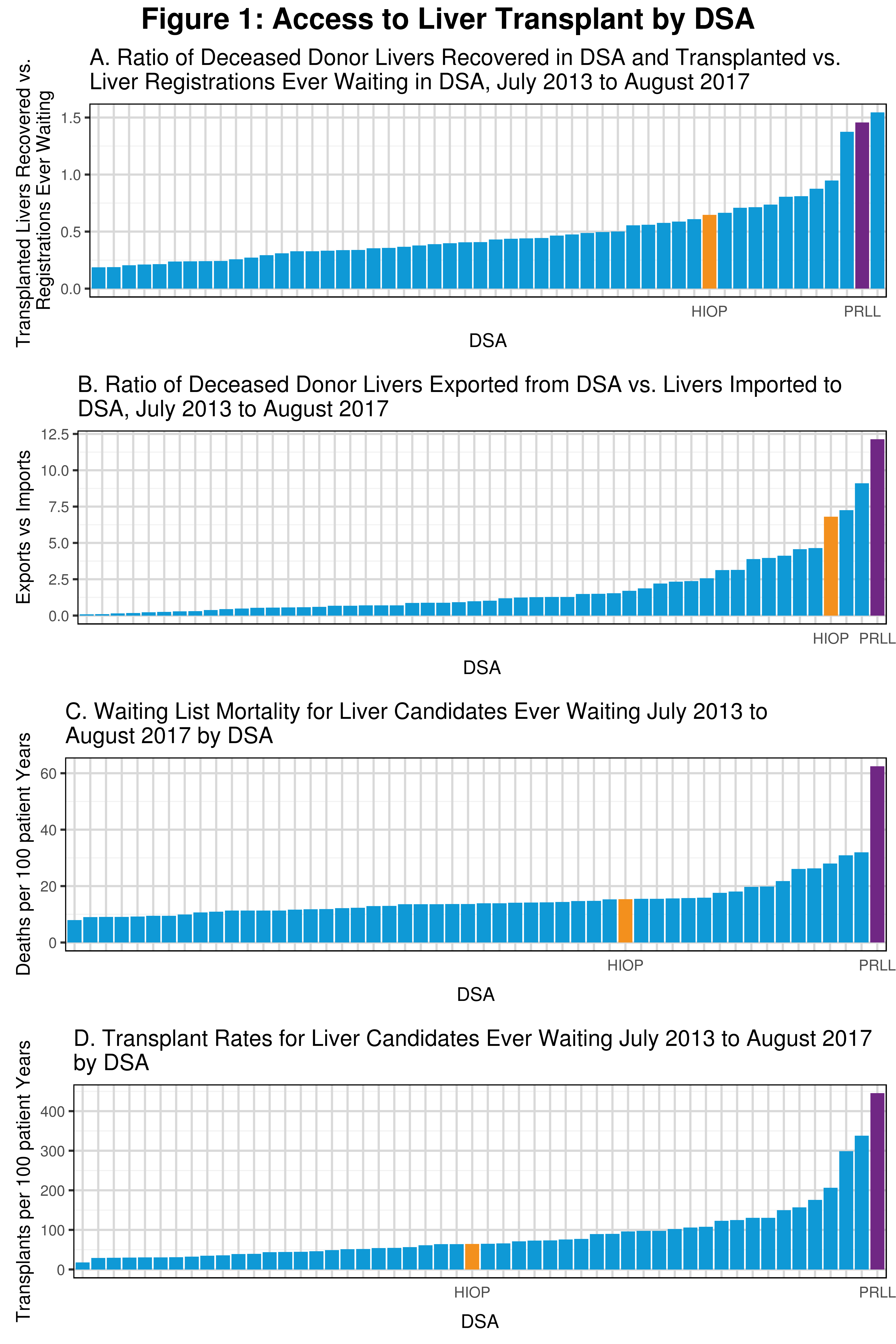Access to Deceased Donor Liver Transplant for Candidates in Hawaii and Puerto Rico
1United Network for Organ Sharing, Richmond, VA, 2Cedars-Sinai Medical Center, Los Angeles, CA, 3Mayo Clinic Arizona, Phoenix, AZ, 4Joslin Diabetes Center, Harvard Medical School, Boston, MA
Meeting: 2019 American Transplant Congress
Abstract number: D176
Keywords: Allocation, Liver, Liver transplantation
Session Information
Session Name: Poster Session D: Non-Organ Specific: Disparities to Outcome and Access to Healthcare
Session Type: Poster Session
Date: Tuesday, June 4, 2019
Session Time: 6:00pm-7:00pm
 Presentation Time: 6:00pm-7:00pm
Presentation Time: 6:00pm-7:00pm
Location: Hall C & D
*Purpose: Hawaii and Puerto Rico comprise their own donor service areas (DSAs), HIOP and PRLL respectively. The liver programs in these locations serve populations mostly comprised of ethnic minorities and face unique challenges in acquiring organs from the mainland due to their geographic isolation. The OPTN Minority Affairs Committee was concerned this isolation could potentially impact access to liver transplant for candidates waiting in these DSAs.
*Methods: We queried the OPTN database for all deceased liver donors, liver candidates ever on the waiting list, and recipients 18 years or older transplanted from July 2013 to August 2017. This timeline roughly corresponds to the implementation of Share 35 and Hurricane Maria devastating Puerto Rico. Metrics were compared by DSA.
*Results: Between July 2013 and August 2017 26,512 deceased donor livers were recovered and transplanted in the U.S., of which 88 were recovered in HIOP and 341 were recovered in PRLL. Over the same time period, there were 67,846 candidates ever on the waiting list, 136 in HIOP and 234 in PRLL. Nationally, the ratio of livers transplanted to candidates waiting was 0.39. PRLL was one of three DSAs to have more livers recovered than registrations on the waiting list (Figure 1A, ratio = 1.5). HIOP and PRLL exported 7 and 12 times as many livers as they imported respectively, compared to the national rate of 0.88 (Figure 1B). Candidates in PRLL experienced higher waiting list mortality (Figure 1C, rate = 62 deaths per 100 patient years, 95%CI:[42-89]) than candidates in HIOP (15[9-24]) and nationally (13.2[12.9-13.5]). However, candidates in PRLL also experienced higher transplant rates (Figure 1D, rate = 445[382-516] transplants per 100 patient years) than HIOP (64[49-83]) and the nation (53[52-54]).
*Conclusions: Candidates waiting in HIOP and PRLL do not appear to have disparate access to liver transplant, despite high waiting list mortality in PRLL. Access to transplant in Hawaii and Puerto Rico should continue to be monitored as changes to liver allocation are implemented to ensure access remains equitable.
To cite this abstract in AMA style:
Robinson AM, Kim IK, Mathur AK, Rosas SE. Access to Deceased Donor Liver Transplant for Candidates in Hawaii and Puerto Rico [abstract]. Am J Transplant. 2019; 19 (suppl 3). https://atcmeetingabstracts.com/abstract/access-to-deceased-donor-liver-transplant-for-candidates-in-hawaii-and-puerto-rico/. Accessed December 24, 2025.« Back to 2019 American Transplant Congress

